Zipline
Latest
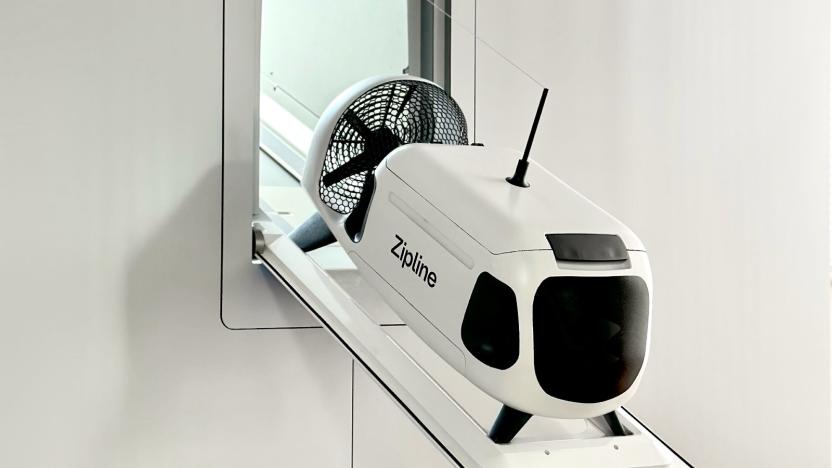
Next-generation Zipline P2 Zip drone comes with an adorable ‘droid’ sidekick
Zipline’s P2 Zip drone consists of two autonomous vehicles that will work in unison with one another to deliver packages that weigh up to 8 pounds.
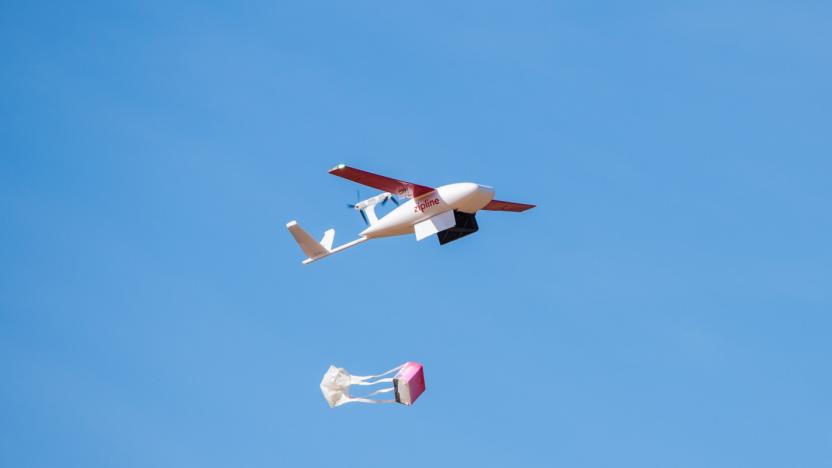
Zipline drones will deliver medicine to communities in Utah
It can only do deliveries in the Salt Lake Valley area for now, but it will expand its coverage over the next five years.

Walmart partners with Zipline for glider drone delivery tests
Walmart has had drone delivery ambitions for years now, and today they’ve announced a partnership with Zipline for on-demand delivery of “health and wellness” products.
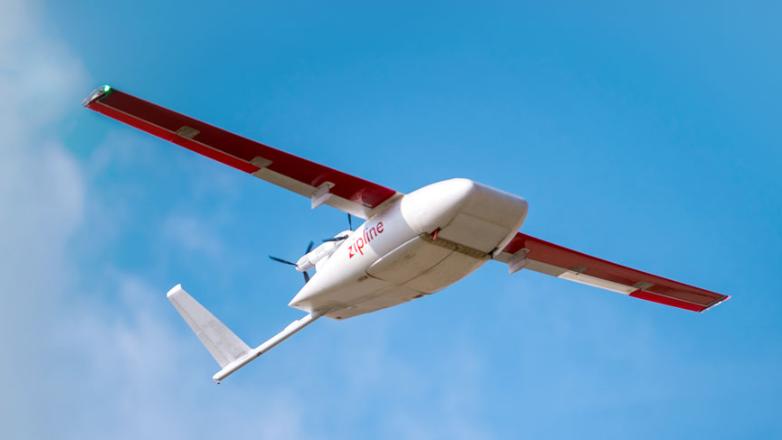
Zipline will use its drones to deliver PPE to US healthcare workers
Drones will be used to deliver PPE to healthcare workers in North Carolina.
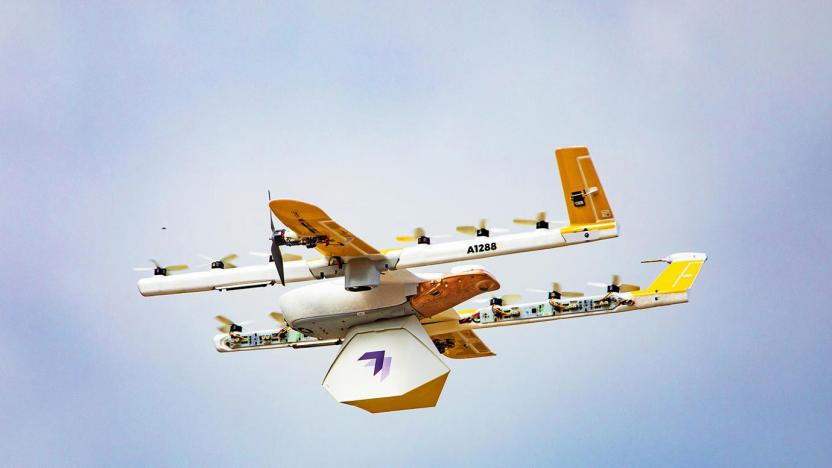
Drone deliveries are making their case in a crisis
It’s no surprise, then, that drone deliveries have taken so long to truly take off worldwide. Take Matternet. Matternet’s contributions could go even further. Matternet’s hospital payloads are given a similar wipe down. The uptick in Wing deliveries isn’t surprising.
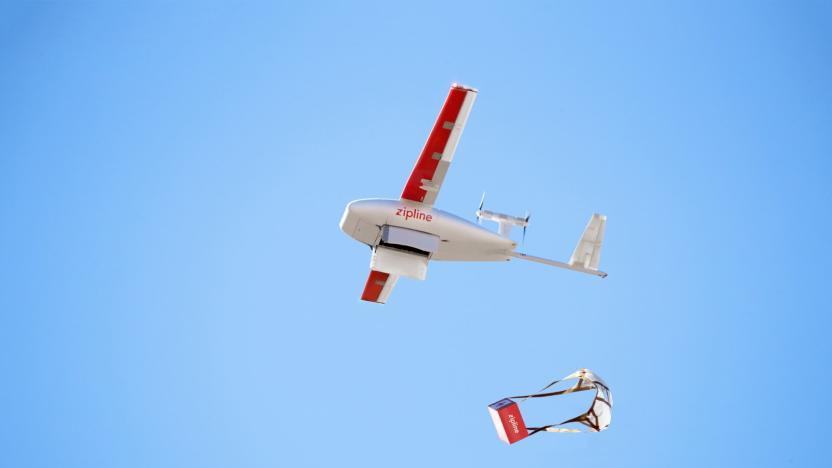
Zipline expands medical drone deliveries to Ghana
While the jury on consumer drones is still out, unmanned aerial vehicles (UAVs) are fast becoming an important tool in global delivery networks. Take Zipline as a prime example: since 2016, the Californian company has used unmanned aircraft to deliver critical medicines and blood to hospitals over huge distances in Rwanda. According to the Financial Times, the Silicon Valley startup is drastically expanding its presence in Africa, mobilzing what will become the world's largest drone delivery network to transport "150 different medicines," vaccines and blood to 2,000 clinics in remote parts of Ghana.

Ziplining and VR headsets make a weird couple
Hailed as the next big thing a few years ago, virtual reality has yet to truly make its mark. Perhaps there'll never be one killer use for VR, and it'll remain a minor player in many niches: gaming, entertainment, education, therapy, enterprise, art and others. Some of the more unusual experimentations mix the virtual world with the real. VR roller coasters, for instance, blend physical movement with elaborate virtual settings to create a unique experience. Zip Now in London is trying something similar: ziplining with a VR twist.

Rwanda will get drone-delivered medical aid in July
In July, a fleet of fixed-wing drones will start dropping precious medical supplies to 21 hospitals and clinics in western Rwanda. These autonomous drones are made by an American startup called Zipline, which signed a contract with the country's government in February. They're designed to follow a flight path stored in a SIM card, fly to a clinic and drop their payload attached to a paper parachute from a low altitude before going back to their base. The machines can carry up to 3.5 pounds of blood and medicine, and each one can make 50 to 150 deliveries a day, flying around 180 miles an hour.

Insert Coin: LineCam is a high-flying cable car system for your camera
In Insert Coin, we look at an exciting new tech project that requires funding before it can hit production. If you'd like to pitch a project, please send us a tip with "Insert Coin" as the subject line. Father and son team Nick and Larry Braun want to build a portable zip line system for cameras. Problem is, predictably, design and manufacturing cost a lot of money. So, the two have turned to Kickstarter and are asking for a little help in getting their LineCam project off the ground. The duo are actually building two different models: the simple, gravity-powered Glide and the motorized Flow. Both are wheeled carts that attach to a cable and have mounts for various cameras, including standard tripod mounts for shuttling DSLRs through the air. The Glide is capable of using smaller gauge line and has a simpler rigging assembly, which helps keep cost and weight down. The remote controlled Flow, on the other hand, requires a much more robust setup. The Flow is definitely the more interesting of the two products. Rather than simply riding the cable under the the influence of physics, it features an RF remote with speed control and the ability to run in reverse. And the 10,900mAh battery is charged in part by a regenerative breaking system packed into the shuttle. Having all this machined aluminum made here in the US isn't cheap however. The Glide platform alone (that includes none of the rigging or cabling) will require a pledge of $510. The Flow? A jaw dropping $4,535. And if you want all the necessary equipment to film your exploits from the air you'll have to offer support totally $5,600. Still, if you're serious about your photography and video, it might not seem like that absurd a price. Heck, the GoPro guys seem to like it. Check out the video pitch for the LineCam after the break.

Crossbows and ziplines used to smuggle iPads into Hong Kong
Some Asian smugglers tried a creative new method to get iPads and iPhones from mainland China into neighboring Hong Kong. Rather than hire housewives to do their dirty work, this group used a crossbow to shoot a zipline from a Shenzhen skyscraper across the Sha Tau Kok river to a small house in Hong Kong. Once the fishing line was secured, bags filled with iPhone 4s and iPads were shuttled across the river at night using a rudimentary pulley system. Police detected the line, arrested six people and confiscated more than 50 iPhones and iPads worth 300,000 Yuan ($46,600). [Via MICGadget and TechCrunch]

Smugglers use zip line and slingshot to sneak iPads into Shenzhen
Chinese smugglers turned to a rather low-tech method for getting a pile of decidedly high-tech iPads and iPhones across the border to Shenzhen, in a scheme to make money off of regional tax differences. The unsanctioned exporters fired a slingshot from a high-rise in Shenzen, dragging a zip line down to a small house just across the Sha Tau Kok river in Hong Kong. They then sent canvas bags loaded with the gadgets flying through the night sky along the projectile-placed cable -- at least until authorities spotted the gear hurtling through the air, that is. Police recovered about $46,000 worth of Apple products (and four culprits) when they discovered the end of the 300-meter line. Check out the video below for a little Chinese-language news coverage of the story and a glimpse at the simple, but ingenious, smuggling rig.

Inhabitat's Week in Green: LED lights, biofuel airplanes, and prescription tattoos
The Week in Green is a new item from our friends at Inhabitat, recapping the week's most interesting green developments and clean tech news for us. This week Inhabitat saw the light as we showcased an array of exciting developments in energy-efficient illumination. First off, Philips dazzled attendees at this year's Lightfair expo as they unveiled the EnduraLED -- the world's first LED replacement for those ubiquitous energy-sucking 60 watt incandescent bulbs. We were also excited to see the unveiling of the SolPix - a giant energy generating LED wall that doubles as solar shade and can be installed as high-tech building cladding. And if you think energy-efficient lighting isn't easy on the eyes, check out this beautiful LED flower that soaks up sun during the day and blooms at night. We also looked at several incredible (and insane) futuristic modes of transportation - for starters, how about an electric zip-line backpack that shoots you through city streets? We were also impressed by the Cell, a shape-shifting electric vehicle concept that comes complete with its own car-sharing transit system. And if soaring through the skies is more your style, check out these self-sufficient airships that harness solar energy to generate biofuel. Wearable tech saw several developments as well - this week we looked at the ultra-efficient 3d printers that created Iron Man's suit of armor. In other news, your next trip to the doctor could merit more than a single shot in the arm - researchers are developing a new type of "prescription" tattoo that keeps tabs on glucose levels using infra-red ink. Finally, we saw several remarkable inventions that stand to change how we combat climate change and construct our built environment. This week Bill Gates unveiled plans to invest in the development of a fleet of seawater-spraying mist machines that could combat climate change by creating sunlight-reflecting clouds, and we looked at a new type of biologically crafted brick that can be "grown" from a combination of sand, bacteria, and urine.








